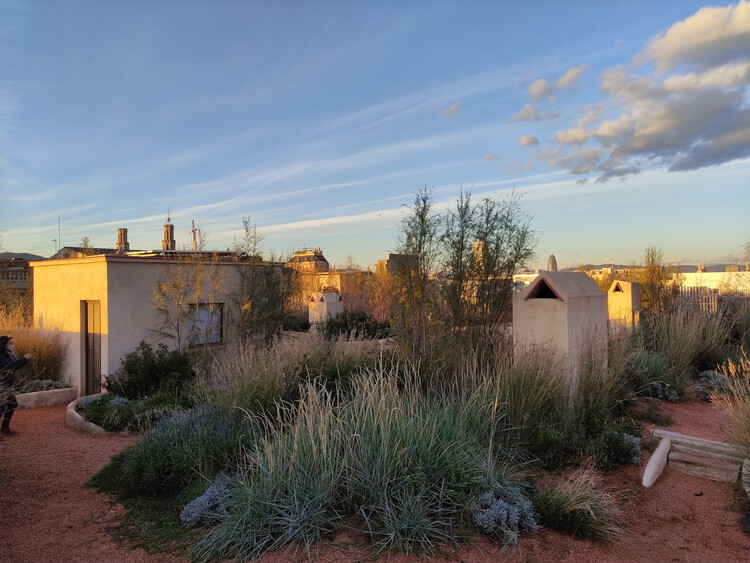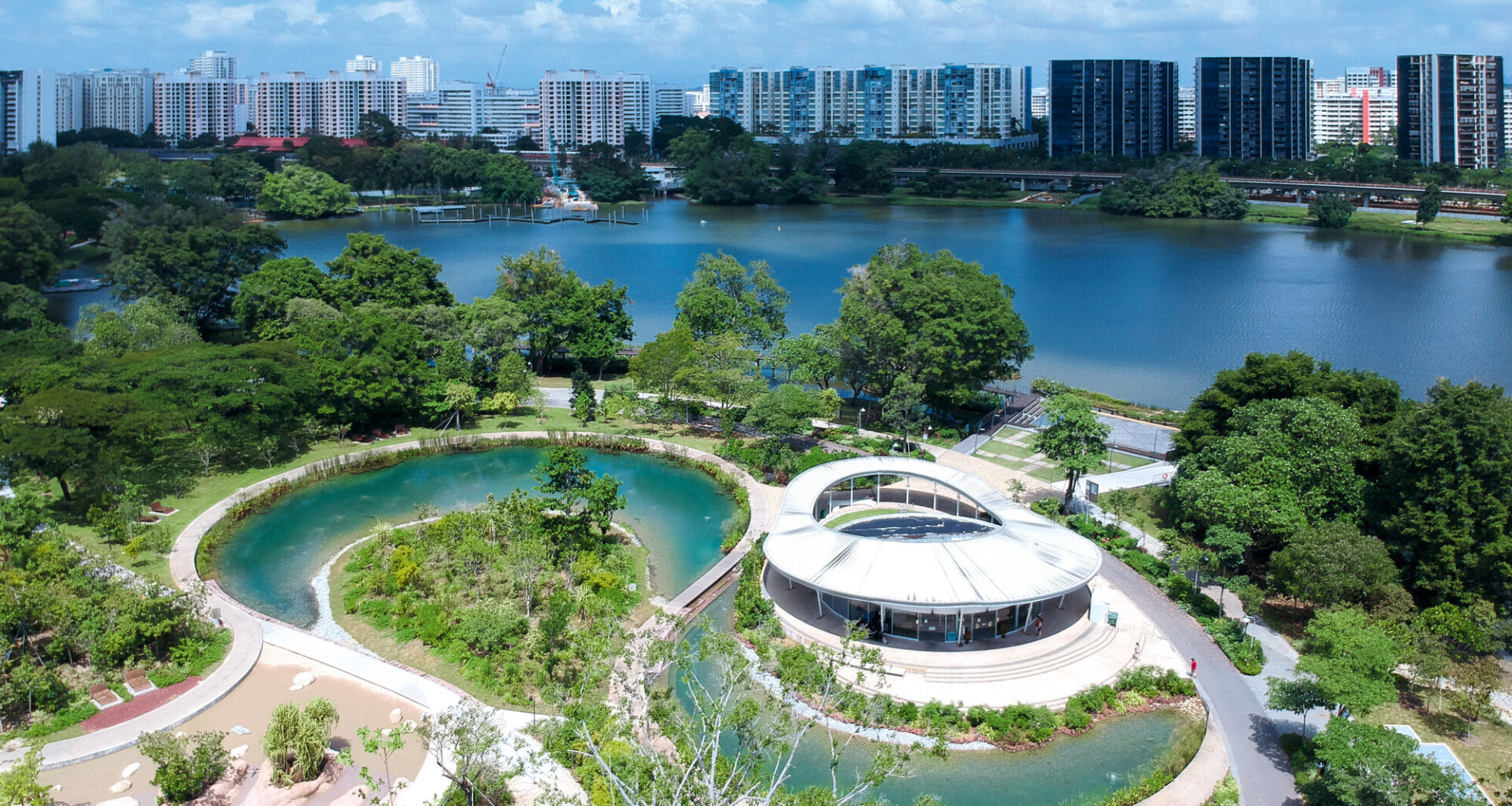 Jurong Lake Gardens is one of Singapore’s newest national gardens, a 90-hectare urban oasis for the community. Elevate’s PondGard EPDM membrane was used to waterproof the pond. Image Courtesy of Holcim
Jurong Lake Gardens is one of Singapore’s newest national gardens, a 90-hectare urban oasis for the community. Elevate’s PondGard EPDM membrane was used to waterproof the pond. Image Courtesy of Holcim
Share
Share
Or
https://www.archdaily.com/1035817/designing-for-tomorrow-nature-positive-solutions-in-urban-environments
The future of urban planning and architecture is promising if the world, collectively, looks beyond the concept of mere sustainability and instead embraces a nature-positive approach. As global population growth drives rapid urbanization—requiring humanity to build the equivalent of a city the size of Madrid every week for decades to come—the construction sector faces a defining challenge: how to build durable, energy-efficient, and resilient urban environments in harmony with natural ecosystems.
Imagine a city of the future, full of greenery and biodiversity, offering a high quality of life while coexisting with nature. Nature absorbs half of the world’s carbon emissions and serves as the foundation of our economies and livelihoods. So how can the industry drive the creation of next-generation, nature-positive cities?
“Forward-thinking cities are now pioneering transformative solutions, enabled by end-to-end sustainable building systems. We are able to support them across the value chain, bringing nature into cities to help them build nature-positive spaces,” says Antonio Carrillo Doblado, Vice-President of Sustainability at Holcim.
The Shared Opportunity to Build a Nature-Positive Future
To build the sustainable, resilient cities of tomorrow, forward-looking city leaders are reimagining the construction of urban environments. They increasingly prioritize building solutions that deliver full performance with a smaller carbon footprint and reduced use of primary materials. For instance, Holcim‘s ECOPact low-carbon concrete reduces embodied carbon emissions by at least 30% compared to traditional concrete—without compromising performance.
Solutions like ECOPact are supported by Environmental Product Declarations (EPDs), which independently verify a material’s environmental impact across its lifecycle. Holcim provides digital, on-demand EPDs for any concrete mix within minutes, allowing architects and planners to optimize designs and report on sustainability performance from tender to construction.
 Casa d’en Xifré, a listed apartment block in Barcelona, was renovated to include an accessible terrace garden to enhance urban biodiversity. The roof garden was built using a RubberGard EPDM waterproofing membrane and a ZinCo green roofing system.. Image Courtesy of HolcimThe Circular Imperative: Building Cities from Cities
Casa d’en Xifré, a listed apartment block in Barcelona, was renovated to include an accessible terrace garden to enhance urban biodiversity. The roof garden was built using a RubberGard EPDM waterproofing membrane and a ZinCo green roofing system.. Image Courtesy of HolcimThe Circular Imperative: Building Cities from Cities
Accelerating circular construction is essential for meeting growing demand sustainably. Circularity ensures materials remain in use as long as possible and are reused at the end of their life cycle. This vision is being realized through urban mining—the process of recovering and reusing materials from construction and demolition waste.
Holcim’s ECOCycle® circular technology recycles construction and demolition materials into new solutions and products effectively scaling up the circular economy. The Recygénie housing complex in Paris, the world’s first building to be constructed out of fully recycled concrete, is a prime example. “We are actively working to build cities from cities by opening recycling centers in the metropolitan areas where we operate, scaling up the efficient and local use of resources,” notes Carrillo Doblado.
Energy-Efficient Building and Use
With 80% of current structures expected to remain in use by 2050, “energy-efficient repair and refurbishment is a non-negotiable step to reshape our cities and prolong the lifespan of buildings while significantly improving energy performance”, Carrillo Doblado points out.
Solutions like Airium® insulation, using mineral insulating foam, and PRB External Thermal Insulation Composite Systems (ETICS) significantly enhance thermal and “acoustic” insulation—improving quality of life while reducing energy demand.
 Parque La Mexicana, Mexico City, Mexico. Built with Fuerte inside. Image Courtesy of HolcimManage Climate Impacts with Green Roofs
Parque La Mexicana, Mexico City, Mexico. Built with Fuerte inside. Image Courtesy of HolcimManage Climate Impacts with Green Roofs
In the face of rising sea levels and extreme weather, infrastructure must be built to withstand climate change while actively integrating nature into the urban fabric. “We must integrate durable solutions, like green roofing systems to reduce the urban heat island effect, and water-permeable concrete to reduce flooding risks. A city full of greenery and biodiversity is indeed better equipped to ensure quality of life and resilience for its community” says Carrillo Doblado.
Green roofs, for example, provide natural habitats and passive cooling, reducing surface temperatures by 30–40% compared to conventional roofs. A study by Cardiff University found that green roofs and walls can also cool local temperatures by between 3.6°C and 11.3°C—a principle that ZinCo recognized early on. Founded in 1957, the company is a pioneer and innovator in “living” green solutions that bring nature into cities, allowing biodiversity to thrive while also providing stormwater management.
Building for Resilience and Harmony with Nature
Permeable concrete rapidly absorbs rainwater and enables the swift drainage of water directly into the soil, producing a natural aquifer recharge or allowing the water to be recycled. This helps reduce the risks of floods, one of the most destructive natural disasters. Hydromedia, for example, enables the ultra-rapid drainage of water directly into the soil, promoting natural aquifer recharge or enabling water recycling.
Around three-quarters of the world’s largest cities are located along coastlines, and by 2025, estimated 410 million people in coastal communities could be at risk of flooding and rising sea levels. Shore protection systems for coastal and revetment areas provide stabilization and erosion control. Holcim‘s Xbloc is a coastal breakwater armor system that uses ECOPact low-carbon concrete.
Through its offering of integrated, high-value solutions, Holcim aims to support its partners, from public authorities and urban planners to architects and engineers, in accelerating the creation of nature-positive cities for generations to come.
